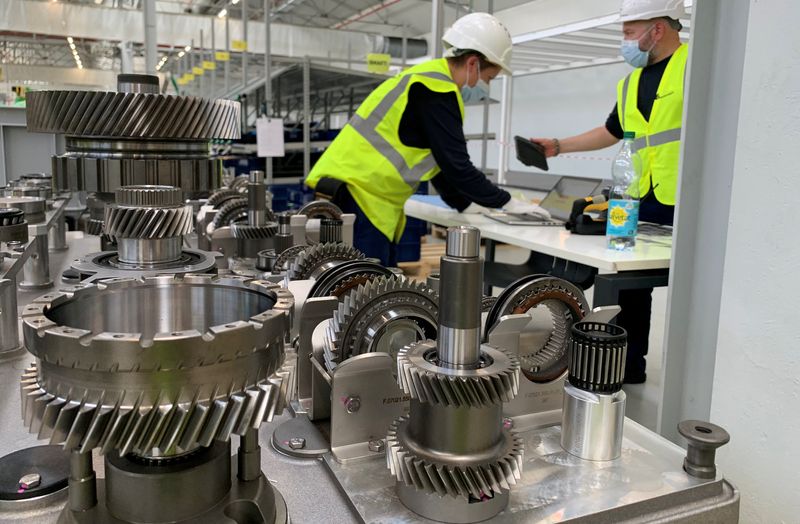By Gilles Guillaume
TREMERY (Reuters) -World No. 4 carmaker Stellantis said on Wednesday it will speed up electric motor production at its factory in Tremery, France, long the world's largest diesel engine plant, to account for 50% of the facility's capacity by 2024.
In 2021, diesel accounted for 67% of production at this plant in northeastern France. By 2024, diesel engines will make up only 30% of installed capacity. Gasoline engines, also used for hybrid electric vehicles, will make up 20% of capacity.
Via a joint venture with Japanese electric motor maker Nidec, Stellantis plans production capacity of 200,000 motors at Tremery by the end of 2021 and more than 1 million in 2024.
"It is quite symbolic to see this as our leading plant for starting e-motor production and transformation we face," Stellantis' Chief Manufacturing Officer Arnaud Deboeuf told reporters. Within the last decade, diesel accounted for more than 50% of European new car sales, but the technology has fallen out of favour as the European Union has focused on zero-emission cars.
EU countries on Wednesday agreed on proposed laws to combat climate change, backing an effective ban on new fossil-fuel car sales from 2035.
Shifting to electric presents carmakers with considerable jobs and training challenges. An electric motor has a third of the parts of an internal combustion engine, requiring fewer parts and labour.
The Tremery plant opened in 1979 and has already shed jobs. The factory currently employs around 2,400 people and a nearby gearbox plant in Metz has 1,100 workers, compared to 3,000 and 1,400 respectively in 2019.
By 2024, Metz will have 62 percent of its capacity devoted to electrified dual-clutch gearboxes for plug-in hybrids.

Stellantis has invested more than 37 million euros ($38.73 million) in Tremery and Metz for both electric motors and new gasoline engines.
($1 = 0.9553 euros)